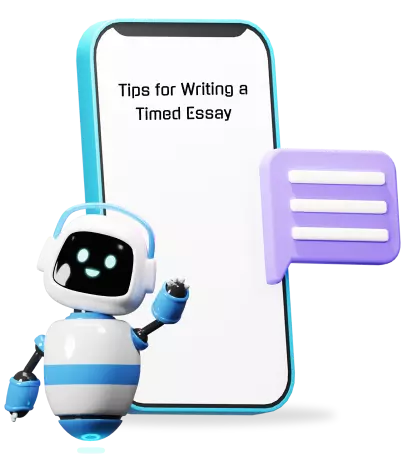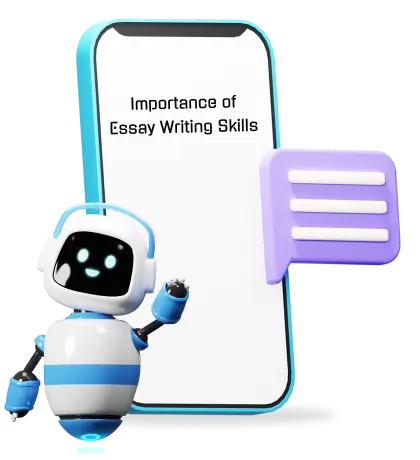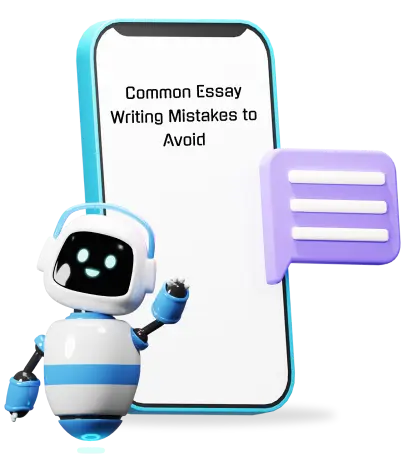🔥 First Order Is Free ( View Details )
Have you ever found yourself staring at a blank page, unsure of where to begin your essay?
It's a common struggle for many students and writers - you have an idea in your head, but can't seem to get it down on paper. As the minutes tick by, frustration sets in and the task at hand becomes more daunting.
But what if there was a way to make the essay writing easier and more efficient? Well, that's an essay outlining.
It's a simple yet powerful technique that can help you organize your thoughts and bring your ideas to life on paper.
In this post, we'll explore the benefits of outlining your essay, and the different types of outlines. We'll also provide you with tips and examples to help you master this vital step in the writing process.
So, without further ado, let's get started.
An ai essay outliner is a tool used to organize and structure your thoughts before you begin writing your essay.
It is a roadmap that guides you through the writing process, helping you to identify the main points and supporting details of your argument.
Essentially, an outline serves as a blueprint for the structure of your essay. Creating an outline is a critical step in the writing process, and can save you a significant amount of time and effort in the long run.
Creating an outline for your essay can provide numerous benefits to help you write a clear, concise, and organized piece.
Here are some of the main benefits of outlining your essay:
Improve Organization And Clarity Of Ideas
An outline helps you organize your thoughts and ideas in a logical and coherent manner, making it easier to understand and follow your argument.
It helps you to identify the main points you want to make, and the order in which you want to present them.
Save Time And Effort In The Writing Process
By outlining your essay, you can save time and effort during the writing process. It provides a roadmap for you to follow, making it easier to write the essay quickly and efficiently.
Helps Identify And Address Potential Gaps In The Argument
An outline can help you to identify any gaps or weaknesses in your argument before you start writing. By outlining your ideas, you can ensure that your argument is well-supported and that there are no missing pieces.
Enhance The Coherence And Flow Of The Essay
Outlining your essay can help you to create a cohesive and well-structured piece. By organizing your ideas and thoughts in a logical order, you can ensure that your essay flows smoothly from one point to the next.
This makes it easier for readers to follow your argument and to understand your main points.
When it comes to outlining your essay, there are two main types of outlines to choose from:
Topic Outlines
Sentence Outlines
Let's examine them in detail.
Topic outlines are composed of short phrases or words that represent the main points of your essay. They are often used for longer essays or research papers, as they provide a broad overview of the content that will be covered in each section.
It's a simplified way of outlining that can help you get started on your essay without feeling overwhelmed by the details.
With a topic outline, you can quickly jot down your main ideas and organize them into a logical structure. This type of outline is helpful for organizing your thoughts and getting a general sense of how your essay will flow.
Sentence outlines, on the other hand, are more detailed and structured. They consist of full sentences that describe each main point and supporting detail. This type of outline is often used for shorter essays or papers, as it allows for a more detailed examination of each point.
It helps you to expand on your ideas and flesh out your arguments by providing more detail and supporting evidence.
While both types serve the same purpose of organizing your thoughts and structuring your argument, there are some key differences between the two.
Let's take a look at them.
| Types | Topic Outline | Sentence Outline |
| Structure | Consists of short phrases or words | Consists of full sentences |
| Purpose | Provides a broad overview of main points | Provides a detailed examination of each point |
| Length | Generally shorter than sentence outlines | Generally longer than topic outlines |
| Use | Best suited for longer essays or research papers | Best suited for shorter essays or papers |
| Flexibility | Allows for more flexibility in organization | Allows for less flexibility in organization |
| Detail | Provides a general idea of content | Provides a detailed and comprehensive plan of content |
To help illustrate how outlines work and how they can be used effectively, let's take a look at a few examples.
I. Introduction
A. Definition of exercise
B. Importance of exercise for physical and mental health
II. Physical Benefits of Exercise
A. Weight loss
B. Stronger muscles and bones
III. Mental Benefits of Exercise
A. Reduced stress and anxiety
B. Improved mood and self-esteem
IV. Different Types of Exercise
A. Aerobic exercise
B. Strength training
V. Conclusion
A. Summary of the benefits of regular exercise
B. Encouragement to make exercise a part of daily routine
This is an example of a topic outline that uses short phrases to outline the main points of an essay. It provides a clear structure for the essay and helps the writer to stay focused on the main topic.
I. Introduction
A. Definition of homemade bread
B. Importance of making bread from scratch
II. Ingredients Needed
A. Flour
B. Water
C. Yeast
D. Salt
III. Steps to Make Homemade Bread
A. Mixing the ingredients
B. Kneading the dough
C. Proofing the dough
D. Shaping the dough
E. Baking the bread
IV. Variations and Tips for Homemade Bread
A. Different types of flour
B. Adding herbs or spices
C. Storing the bread
V. Conclusion
A. Summary of the benefits of making homemade bread
B. Encouragement to try making bread from scratch
This example of a sentence outline uses full sentences to outline the main points of an essay. It provides more detail than a topic outline and helps the writer to flesh out their ideas more fully.
Here are some tips to consider to ensure that you have the right approach when writing an outline.
Start with a Clear Thesis Statement: The thesis statement should be the foundation of your outline. Make sure to clearly state your main argument and supporting points.
Use a Logical Structure: Make sure your outline follows a logical structure that flows from one point to the next. Use headings and subheadings to organize your ideas and ensure that each section relates to your thesis statement and topic sentence.
Include Supporting Evidence: Each point in your outline should be cited and supported by evidence, whether it's a quote, statistic, or example. Make sure to include enough detail to support your argument effectively.
Keep it Concise: Your outline should be a brief summary of your essay, so keep it concise. Avoid including unnecessary details or repeating information. Moreover keep your essay’s length in mind while you finalize your outline.
Be Flexible: Your outline should be a guide, not a rigid template. Be prepared to make changes as you write your essay and adjust your outline accordingly.
Use Parallel Structure: Use parallel structure for headings and subheadings to make your outline consistent and easy to follow.
Review and Revise: Once you have completed your outline, review it carefully to make sure it effectively summarizes your argument. Revise it as necessary to ensure that it accurately reflects the content of your essay.
Expert Tip
Navigate the realm of academic writing with confidence by grasping some essential do's and don'ts!
In conclusion, outlining your essay can greatly benefit your writing process. It helps you organize your ideas, saves time, and enhances the coherence and flow of your essay.
By following the tips on how to create an effective outline, you can make sure that your essay is well-structured and clearly communicates your argument.
If you’re a student looking for additional support after outlining, there are numerous AI tools available to assist with your writing. Try our essay writer with citations to generate flawless essays quickly!

WRITTEN BY
Cathy A. (Mass Communication, Education)
Cathy is a highly dedicated author who has been writing for the platform for over five years. With a Master's degree in Mass Communication, she is well-versed in various forms of writing such as articles, press releases, blog posts, and whitepapers. As an essay writing guide author at PerfectEssayWriter.ai, she has been helping students and professionals improve their writing skills by offering practical tips on research, citation, sentence structure, and style.
For more than five years now, Cathy has been one of our most hardworking authors on the platform. With a Masters degree in mass communication, she knows the ins and outs of professional writing. Clients often leave her glowing reviews for being an amazing writer who takes her work very seriously.
On This Page On This Page
Share this article
How Essay Writing Services Can Help You Achieve Academic Excellence

Balancing Academic Integrity and the Use of Essay Writing Tools

Mastering Timed Essays: Simple Tips for Success

Improve Your Writing Skills: A Guide to the Dos and Don'ts of Academic Writing

The Importance of Essay Writing Skills in the Real World

The 9 Most Common Essay Writing Mistakes to Avoid
